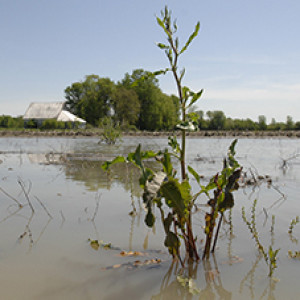
Climate change could scorch and soak Indiana while reshaping key industries, Purdue center says
 2021-08-09
2021-08-09
While intense heat waves and wildfires scorch the Western U.S. and freak rainstorms spawn massive floods in Europe and China, the weather in central Indiana has been fairly tame so far this year.
Indeed, Indiana very well could sidestep some of the most extreme effects of climate change, but don’t get lulled into complacency, says Jeffrey Dukes, director of the Purdue Climate Change Research Center and a professor of forestry and natural resources.
Indiana’s weather already has been altered by man-made climate change, and the effects could be significantly more intense in coming decades, Dukes says. Since 1895, Indiana’s statewide annual average temperature has risen by 1.3°F, and some models show it rising another 5°F by mid-century. Winters will be shorter and the number of days above 95°F could rise by dozens per year.
The state also is getting wetter. Since 1895, average annual precipitation in Indiana has increased by about 15%, or about 5.6 inches. Models show winters and springs are likely to be much wetter by mid-century. Heavy rain events will increase flooding risks and increase the amount of pollutants washing into waterways from city streets and farm fields.
In this week’s edition of the IBJ Podcast, Dukes explains to host Mason King how these changes will impact our day-to-day lives and some of the state’s most important industries, such as agriculture, energy and tourism and recreation.
The IBJ Podcast is brought to you by Resultant, formerly KSM Consulting.
More Episodes
Create your
podcast in
minutes
- Full-featured podcast site
- Unlimited storage and bandwidth
- Comprehensive podcast stats
- Distribute to Apple Podcasts, Spotify, and more
- Make money with your podcast
It is Free
- Privacy Policy
- Cookie Policy
- Terms of Use
- Consent Preferences
- Copyright © 2015-2024 Podbean.com






